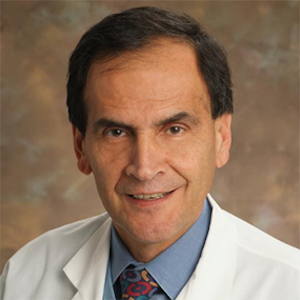Patients with Burnt-Out Diabetes Exhibit Undiagnosed Hyperglycemia, Study Finds
Continuous glucose monitoring metrics showed that patients with burnt-out diabetes and end-stage kidney disease experience significant undiagnosed hyperglycemia.
Guillermo E. Umpierrez, MD
Credit: Emory University

A recent investigation using continuous glucose monitoring (CGM) revealed that patients with diabetes and end-stage kidney disease experiencing burnt-out diabetes have significantly underdiagnosed hyperglycemia.1
Results from a pilot perspective study showed those with burnt-out diabetes experienced higher CGM-measured variables, including daily glucose levels, lower percent time-in-range, and longer duration of hyperglycemia, compared with those without diabetes.
“CGM and glycated albumin provide a better assessment of glycemic control than do values of HbA1c and fructosamine in patients with end-stage kidney disease,” wrote the investigative team, led by Guillermo E. Umpierrez, MD, of the division of endocrinology in the department of medicine at Emory University.
More than 34 million people across the United States have type 2 diabetes, a progressive disease with worsening displayed by micro- and macrovascular complications.2 Burnt-out diabetes is defined as having a hemoglobin A1c value <6.5% without antidiabetic therapy for more than 6 months. Diabetes is the most common comorbid risk factor for chronic kidney disease (CKD) and the leading cause of end-stage kidney disease, according to the literature.
Among patients with burnt-out diabetes, glycemic control is shown to improve spontaneously during disease progression, leading to a decrease or cessation of insulin or other anti-diabetic medications. Although some research has suggested burnt-out diabetes is favorable for patients, given its alteration of the natural course of diabetes, these individuals are also prone to develop hypoglycemia and may experience poor survival outcomes.2
In this study, Umpierrez and colleagues looked to evaluate glycemic control using the Dexcom G6 CGM system metrics and glycemic markers among patients with end-stage kidney disease on hemodialysis with burnt-out diabetes.1 Overall, the 40 patients included in the study wore the CGM for approximately 10 days. Glycemic control was assessed by CGM, HbA1c measures, and glycated albumin and fructosamine measurements among individuals with burnt-out diabetes (n = 20) and without a history of diabetes (n = 20).
Upon analysis, investigators found those with burnt-out diabetes had higher CGM-measured daily glucose levels, a lower percent time in range (TIR;70–180 mg/dL), a higher percent time above range (TAR; >250 mg/dL), and a longer duration of hyperglycemia >180 mg/dL, compared with patients without diabetes. Specifically, among patients with end-stage kidney disease, the data showed a lower TIR 70–180 mg/dL (80% vs. 94%; P <.001), a longer duration of hyperglycemia (17.2% vs. 4.6%; P <.001), and greater TAR >250 (0.5% vs. 0.1%; P <.001).
Umpierrez and colleagues noted both HbA1c levels (5.5 vs. 3.3) and fructosamine mmol/L (331 vs. 315) were similar between those with end-stage kidney disease and burnt-out diabetes and those without diabetes. However, those with burnt-out diabetes exhibited higher levels of glycated albumin compared to patients without diabetes (17.1% vs. 14.5%; P <.02).
“The use of CGM demonstrated that patients with burnt-out diabetes have significant underdiagnosed hyperglycemia,” investigators wrote.
References
- Kaminski CY, Galindo RJ, Navarrete JE, et al. Assessment of Glycemic Control by Continuous Glucose Monitoring, Hemoglobin A1c, Fructosamine, and Glycated Albumin in Patients With End-Stage Kidney Disease and Burnt-Out Diabetes. Diabetes Care. Published online December 12, 2023. doi:10.2337/dc23-1276
- Schexnayder CD, Agbahiwe S, Emelogu O. Burnt Out? The Phenomenon of Type 2 Diabetes Mellitus in End-Stage Renal Disease. Fed Pract. 2020;37(12):580-585. doi:10.12788/fp.0076